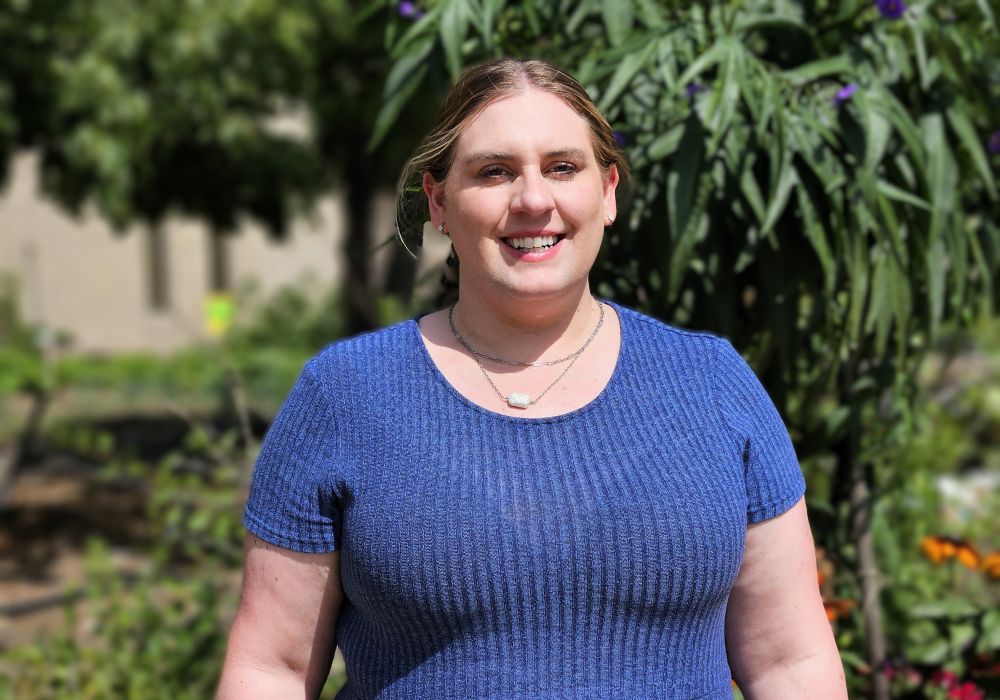
Fedoruk Centre Chair holder is applying advanced neutron imaging to fight global food insecurity
Dr. Marcella Berg (PhD), assistant professor at the UofR and inaugural Fedoruk Chair in Neutron Imaging, is applying neutron imaging technology to understand how plants manage their water resources.
By Amy Janzen, Fedoruk Centre CommunicationsFrom the smallest seed to the deepest root, the way a plant absorbs and responds to water tells a story about how our environment is adapting to climate change. But what if we could develop more drought-resilient crops simply by studying how—and where—plants take in water?
It sounds straightforward, but according to Dr. Marcella Berg, assistant professor in the department of physics at the University of Regina (UofR), the science behind it is anything but simple.
As the inaugural Fedoruk Chair in Neutron Imaging, with funding through the Sylvia Fedoruk Canadian Centre for Nuclear Innovation Inc. (Fedoruk Centre), Berg has access to resources that allow her to apply cutting-edge technology to track how water moves through plants across their entire life cycle.
So, what is neutron imaging? Imagine a beam of subatomic particles, or neutrons, passing through a plant. As these particles interact with the atoms inside, they reveal detailed images of the organism’s internal structure, especially where water is present. This non-invasive technique gives researchers like Berg a one-of-a-kind view into biological processes, all without harming the organism.
“Neutron imaging gives me a unique window into the internal processes of the plant,” said Berg. “By visualizing how water moves through roots and stems, we can better understand how crops respond to drought. Unlike other tools, neutron imaging offers a full picture of the plant’s lifecycle.”
Neutrons are especially sensitive to hydrogen, making them ideal for tracking water inside plant tissues, which is something that X-rays can’t do as effectively. This makes neutron imaging a powerful tool in addressing challenges like global food insecurity, an issue growing more urgent as extreme weather events become more frequent.
“For me, the ability to work with these tools to solve some of the world’s most pressing challenges has been a driver for my research,” said Berg. “This isn’t just about using neat tools and playing with plants; it’s about solving an issue that could be a gamechanger right here in Saskatchewan and beyond.”
The process isn’t without its challenges. Transporting a living plant into a lab while maintaining its natural state is complex. And access to neutron imaging facilities in Canada is limited.
“While there are a few facilities in Canada, having neutron imaging capabilities right here in Saskatchewan would be ideal,” said Dr. John Root (PhD), Executive Director, Fedoruk Centre. “That’s one of the reasons we established the Fedoruk Chair for Neutron Imaging. To bring a world-class researcher like Marcella to Saskatchewan, to support her work, and to create momentum for building some neutron-beam infrastructure closer to home.”
At this time, Berg relies on international partnerships based out of the Netherlands to conduct her neutron imaging studies.
“Having local neutron imaging capabilities would significantly enhance our ability to conduct timely, relevant research,” said Berg. “It would allow us to study local crops under local conditions, leading to solutions that matter directly to the Saskatchewan agricultural industry.”
The Fedoruk Chair in Neutron Imaging was created with that goal in mind. To foster imaging research in Saskatchewan and align with the Canadian Neutron Initiative, which seeks to grow capacity for neutron-based science across Canada.
While Saskatchewan doesn’t yet have its own neutron imaging lab, being part of the province’s growing nuclear research network has been invaluable for Berg.
“Through the Fedoruk Centre, I’ve connected with researchers across disciplines,” said Berg. “Sometimes we collaborate. Other times we just share ideas. But having the community has been essential.”
That community stretches across Regina and Saskatoon and includes support for researchers exploring nuclear applications. Grants from the Fedoruk Centre have supported not only Berg’s current project but also upcoming work with her PhD and postdoctoral students.
What drives Berg most, though, is the urgency.
Drought is no longer an occasional risk. It’s a growing, annual threat to agriculture here and around the world. Through neutron imaging, Berg is not only advancing plant science. She’s helping to lay the groundwork for more resilient, sustainable food systems.
As she continues pushing the boundaries of what’s possible in nuclear imaging, her work offers real hope. For farmers here in Saskatchewan, and for a more food-secure future, rooted right here in prairie soil.
